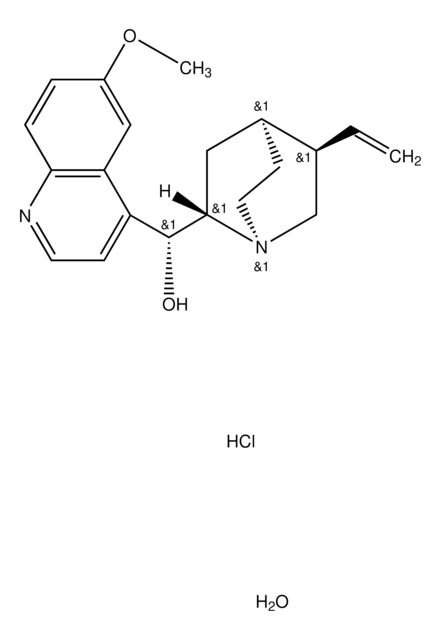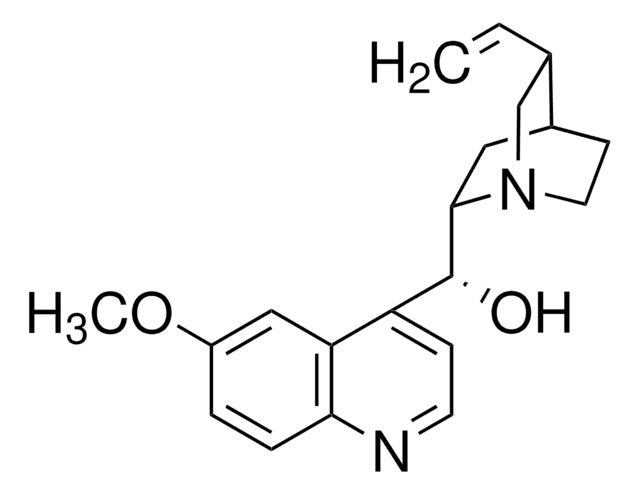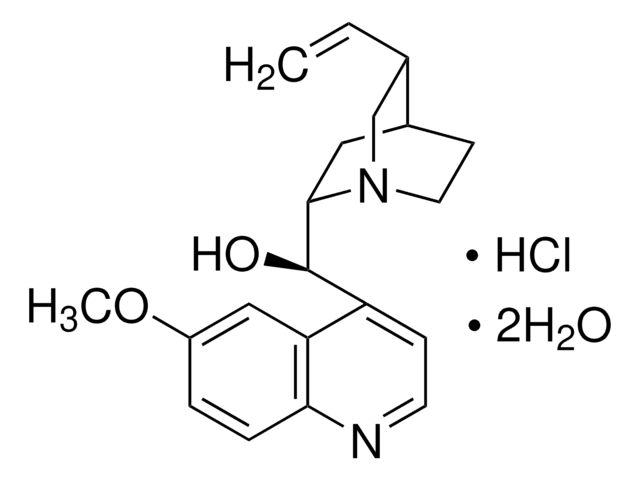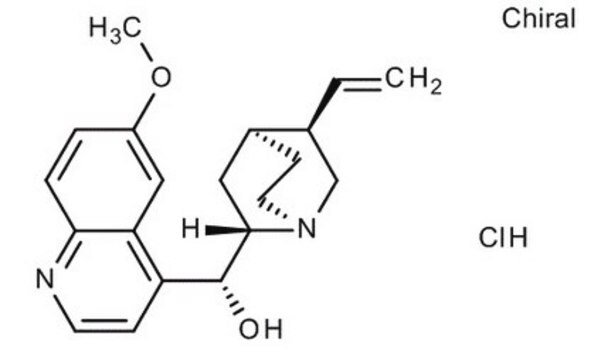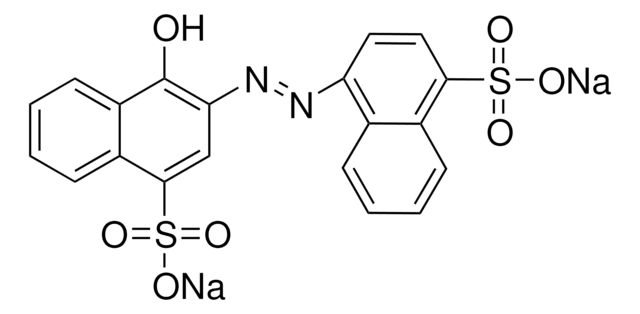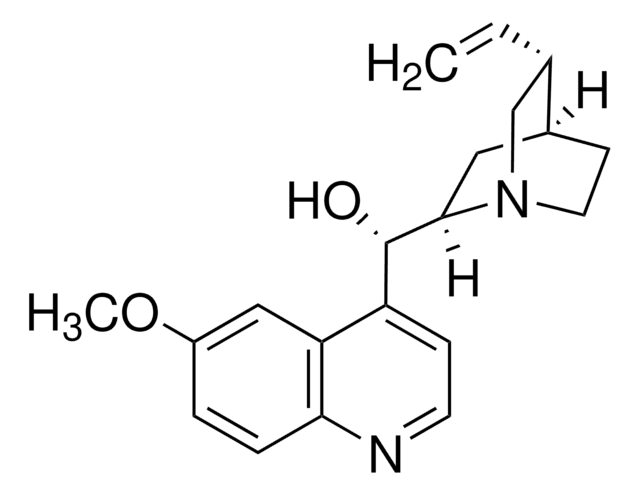22630
Quinine hydrochloride dihydrate
suitable for fluorescence, BioReagent, ≥98.0% (NT)
Sinônimo(s):
(8α, 9R)-6′-Methoxycinchonan-9-ol monohydrochloride dihydrate
About This Item
Produtos recomendados
linha de produto
BioReagent
Ensaio
≥98.0% (NT)
forma
powder
atividade óptica
[α]20/D −230±5°, c = 2% in 0.1 M HCl
Impurezas
≤10% dihydroquinine hydrochloride (HPLC)
solubilidade
H2O: soluble
fluorescência
λex 322 nm; λem 450 nm in H2O
λex 347 nm; λem 448 nm in 0.5 M sulfuric acid
adequação
suitable for fluorescence
cadeia de caracteres SMILES
O.O.Cl.COc1ccc2nccc([C@@H](O)[C@@H]3C[C@@H]4CCN3C[C@@H]4C=C)c2c1
InChI
1S/C20H24N2O2.ClH.2H2O/c1-3-13-12-22-9-7-14(13)10-19(22)20(23)16-6-8-21-18-5-4-15(24-2)11-17(16)18;;;/h3-6,8,11,13-14,19-20,23H,1,7,9-10,12H2,2H3;1H;2*1H2/t13-,14-,19-,20+;;;/m0.../s1
chave InChI
MPQKYZPYCSTMEI-FLZPLBAKSA-N
Procurando produtos similares? Visita Guia de comparação de produtos
Palavra indicadora
Danger
Frases de perigo
Declarações de precaução
Classificações de perigo
Acute Tox. 4 Oral - Resp. Sens. 1 - Skin Sens. 1
Código de classe de armazenamento
11 - Combustible Solids
Classe de risco de água (WGK)
WGK 1
Ponto de fulgor (°F)
Not applicable
Ponto de fulgor (°C)
Not applicable
Equipamento de proteção individual
dust mask type N95 (US), Eyeshields, Faceshields, Gloves
Certificados de análise (COA)
Busque Certificados de análise (COA) digitando o Número do Lote do produto. Os números de lote e remessa podem ser encontrados no rótulo de um produto após a palavra “Lot” ou “Batch”.
Já possui este produto?
Encontre a documentação dos produtos que você adquiriu recentemente na biblioteca de documentos.
Os clientes também visualizaram
Nossa equipe de cientistas tem experiência em todas as áreas de pesquisa, incluindo Life Sciences, ciência de materiais, síntese química, cromatografia, química analítica e muitas outras.
Entre em contato com a assistência técnica